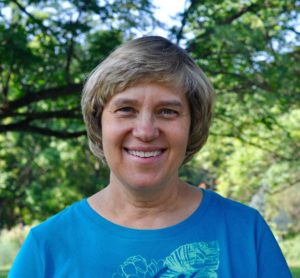
For more than a year, the Mennonite Spiritual Directors Network has been posting brief articles about spiritual direction – testimonies that witness to the potential of spiritual direction for encouraging and deepening spiritual growth.
In addition to articles about spiritual direction, the series will also include brief articles about spiritual practices that renew our faith and strengthen us for ministries of love – peacemaking, healing, compassion and service.
Doreen Miller serves as congregational spiritual director of Gingrichs Mennonite Church in Lebanon, Pennsylvania. She has a deep desire to grow in love and knowledge of God and trusting surrender to God and to learn to love others as Jesus did.
Becoming a mother seemed to transform me into a worrier. I had no anxieties as long as I felt confidently in control of my own life, but as a parent I was now forced to depend on God for our children’s welfare.
The root of worry was my lack of faith in God as God really is — loving, all-powerful, intimately involved, enough.
Motherhood just exposed this lack.
What then would increase my faith? Romans 10:17 declares that “Faith comes from hearing the message, and the message is heard through the word of Christ.” Could God increase my faith and heal my tendency to worry as I “heard” his Word and sought God in prayer?
The ancient spiritual discipline of lectio divina seemed ideally suited to allow God to meet this need. As a technique for praying Scripture, lectio divina involves hearing, processing, and absorbing God’s Word, then responding and resting in God. I decided to try lectio for at least eight weeks with the Gospel of John since “the word of Christ” presumably would be clearer in a gospel. Also, the beloved disciple tends to be poetic, which might disengage my mind and engage my heart a bit more. Though lectio divina may involve some study of Scripture for the sake of information or analysis, the emphasis in this practice is on the heart, spirit, and body.
Lectio divina started with establishing a place and time of uninterrupted solitude and silence, where I invited the Holy Spirit to come to re-form me into the likeness of Christ.
Next, I read (lectio) a short passage aloud while paying attention for a “morsel,” a word or phrase that “shimmers” or stands out by causing some type of reaction, whether resonance or resistance. I was humbled and awed that God gave me a morsel each day.
The next step, meditation (meditatio), seemed to be the core of lectio divina. Meditation is essentially rumination and reflection. Anyone who can worry can meditate, though I struggled with distracted thoughts. Teresa of Avila, who always seemed to have a virtual flock of straying thoughts, recommended not chasing them away during prayer, but instead simply re-turning attention to Christ. Journaling also helped me focus on the morsel and on God.
The next two steps were respond (oratio, or talking to God) and contemplation (contemplatio, or simply sitting in surrender to God). And finally, I returned to everyday life with the resolve to allow God’s Word to become flesh within me.
As a result of practicing lectio for 20 minutes a day, I noticed a deepened awareness and confidence in God’s loving attentiveness.
That may be why I became much less of a worrier (even my husband agrees!). As the Word was hidden in my heart, I encountered God again and again and found Christ to be the Source of living water and daily bread, the Good Shepherd, and the Resurrection and Life. God is more than enough for my children and for me.

